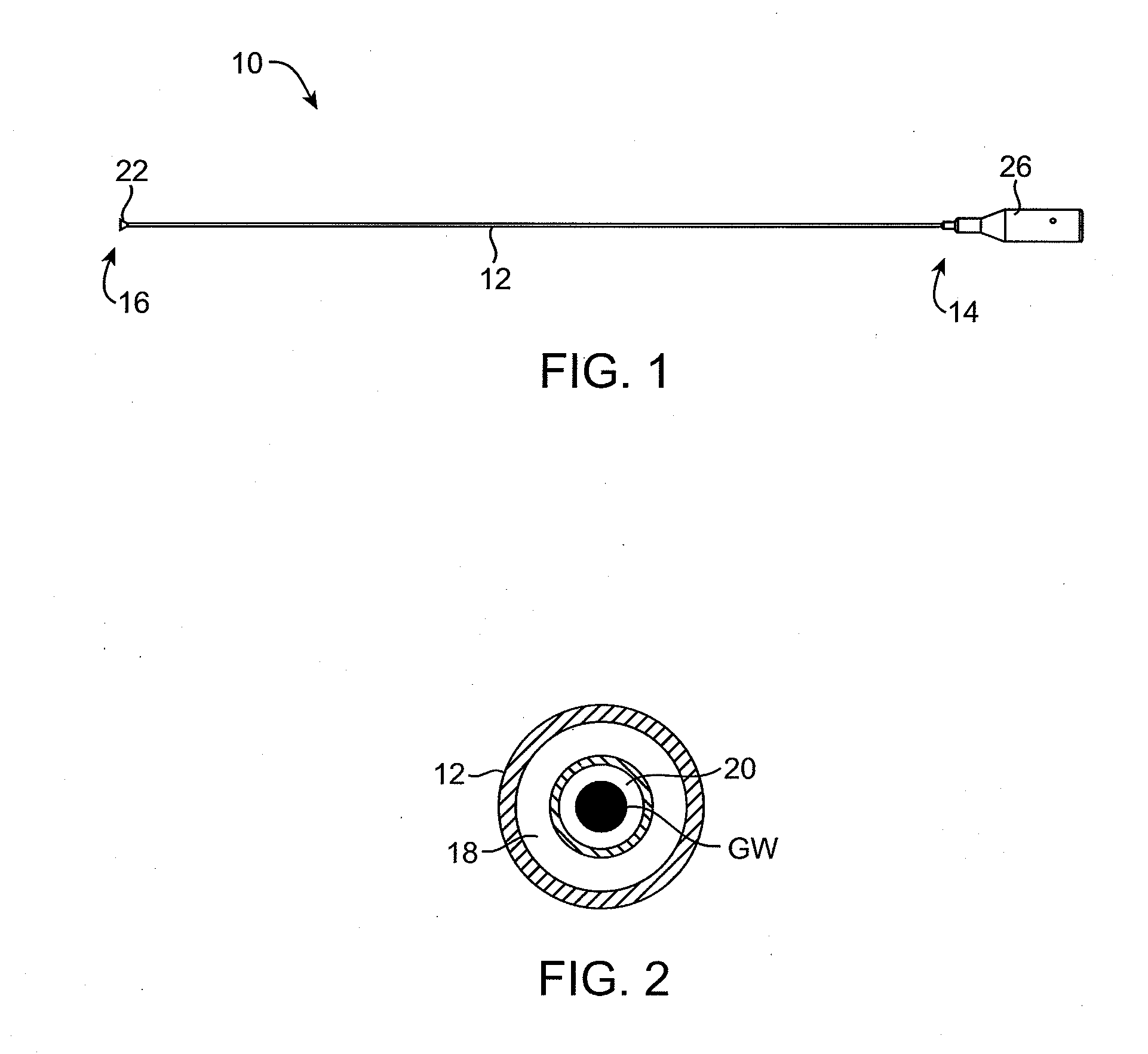Aortic Valve Repair
a technology for aortic valves and valves, applied in the field of aortic valve repair, can solve the problems of reducing the functional area of the valve, affecting the function of the valve, so as to reduce the incidence of restenosis and increase the effect of efficacy
- Summary
- Abstract
- Description
- Claims
- Application Information
AI Technical Summary
Benefits of technology
Problems solved by technology
Method used
Image
Examples
Embodiment Construction
Treatment Catheter Design—General
[0071]Treatment catheters 10 (FIG. 1) of the present invention typically comprise an elongate catheter body 12 that comprises a proximal end 14, a distal end 16, and one or more lumens 18, 20 (FIG. 2) within the catheter body. The distal end 16 may optionally comprise a suction housing 22 (FIGS. 4 and 5) that extends distally from the distal end of the catheter body 12 for isolating the leaflet during treatment as well as providing a debris evacuation path during treatment and protecting the vasculature from adverse embolic events. An energy transmission element 24 (e.g., a drive shaft, wire leads, or a waveguide-ultrasonic transmission element, or the like) may be positioned in one of the lumens in the elongate body 12 and will typically extend from the proximal end to the distal end of the catheter body. A handle 26 is coupled to the proximal end 14 of the elongate catheter body 12. A generator (e.g., RF generator, ultrasound generator, motor, opti...
PUM
 Login to View More
Login to View More Abstract
Description
Claims
Application Information
 Login to View More
Login to View More - R&D
- Intellectual Property
- Life Sciences
- Materials
- Tech Scout
- Unparalleled Data Quality
- Higher Quality Content
- 60% Fewer Hallucinations
Browse by: Latest US Patents, China's latest patents, Technical Efficacy Thesaurus, Application Domain, Technology Topic, Popular Technical Reports.
© 2025 PatSnap. All rights reserved.Legal|Privacy policy|Modern Slavery Act Transparency Statement|Sitemap|About US| Contact US: help@patsnap.com



